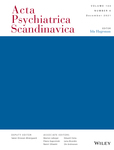Efficacy and acceptability of noninvasive brain stimulation for treating posttraumatic stress disorder symptoms: A network meta-analysis of randomized controlled trials
Abstract
Introduction
Despite its high lifetime prevalence rate and the elevated disability caused by posttraumatic stress disorder (PTSD), treatments exhibit modest efficacy. In consideration of the abnormal connectivity between the dorsolateral prefrontal cortex (DLPFC) and amygdala in PTSD, several randomized controlled trials (RCTs) addressing the efficacy of different noninvasive brain stimulation (NIBS) modalities for PTSD management have been undertaken. However, previous RCTs have reported inconsistent results. The current network meta-analysis (NMA) aimed to compare the efficacy and acceptability of various NIBS protocols in PTSD management.
Methods
We systematically searched ClinicalKey, Cochrane Central Register of Controlled Trials, Embase, ProQuest, PubMed, ScienceDirect, Web of Science, and ClinicalTrials.gov to identify relevant RCTs. The targeted RCTs was those comparing the efficacy of NIBS interventions, such as transcranial direct current stimulation (tDCS), repetitive transcranial magnetic stimulation (rTMS), and transcutaneous cervical vagal nerve stimulation, in patients with PTSD. The NMA was conducted using a frequentist model. The primary outcomes were changes in the overall severity of PTSD and acceptability (to be specific, rates of dropouts for any reason).
Results
We identified 14 RCTs that enrolled 686 participants. The NMA demonstrated that among the investigated NIBS types, high-frequency rTMS over bilateral DLPFCs was associated with the greatest reduction in overall PTSD severity. Further, in comparison with the sham controls, excitatory stimulation over the right DLPFC with/without excitatory stimulation over left DLPFC were associated with significant reductions in PTSD-related symptoms, including depression and anxiety symptoms, and overall PTSD severity.
Conclusions
This NMA demonstrated that excitatory stimulation over the right DLPFC with or without excitatory stimulation over left DLPFC were associated with significant reductions in PTSD-related symptoms.
Trial registration: PROSPERO CRD42023391562.

 求助内容:
求助内容: 应助结果提醒方式:
应助结果提醒方式:


